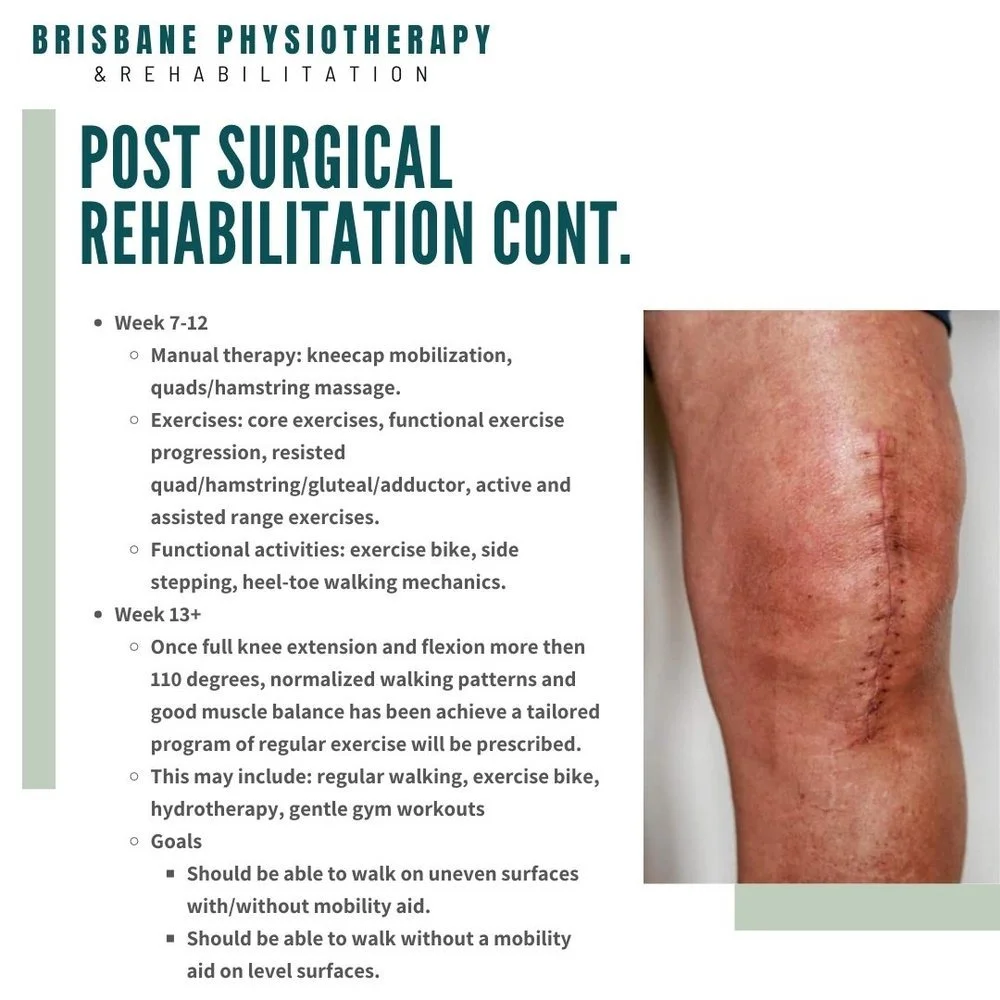Total Knee Replacement
What is a Total Knee Replacement (TKR)?
Total Knee Replacement Description
- The knee is a hinge joint, formed by the end of the thighbone (femur) and the end of the shin bone (tibia). The bones are coated in cartilage, which acts as a cushion between the two bones and allows the knee to move. In front of these bones is the kneecap (patella) which glides in a groove on the end of the thigh bone.
- Total knee replacements are usually performed for people who have arthritis that is getting worse and is no longer responding to other treatments. The most common type of arthritis is osteoarthritis, which happens with aging or previous injury to the knee joint.
- The aim of the procedure is to improve the quality of life of individuals by reducing pain and increasing function.
Total Knee Replacement Procedure
- Total Knee Replacement is the surgical removal of the diseased joint and replacing it with an artificial joint that is attached to the thighbone (femur) and the shinbone (tibia). This is known as a prosthesis.
- In most cases, bone cement is used to fix the artificial joint to the thigh and shinbone. The operation takes 2 – 4 hours.
- If indicated the kneecap may be replaced or resurfaced.
- A quadriceps-splitting or quadriceps-sparing approach may be used.
- The cruciate ligaments may be excised or preserved.
Managing a Total Knee Replacement
Total Knee Replacement Treatment
Pre Knee Surgery Physiotherapy
- A pre-surgical training program focusing on postural control, functional lower limb exercises and strengthening exercises will be prescribed to optimize functional status to improve post-surgical recovery and outcomes.
- Post-surgical rehabilitation exercises may be taught before surgery so that they will be performed more effectively immediately after surgery.
Total Knee Replacement Rehab
Post Surgical Rehabilitation:
Day 1-14
Manual therapy: cryotherapy, Circumferential compression dressing (Tubigrip), elevate affected limb to minimize swelling, ankle exercises.
Range of motion/strengthening exercises: quadriceps, passive knee straitening
Functional activities: walking with crutches, transfers from standing to sitting then sitting to standing.
Goals:
Should be able to ambulate with mobility aid independently.
Knee range = 0-100 degrees
Transfer from bed to chair safely.
Discharge criteria: safe ambulation, independent ascending and descending stairs, understand the home exercise program
Week 3-6
Manual therapy: cryotherapy, circumferential compression dressing (Tubigrip), ankle exercises, kneecap mobilization, quadricep and hamstring massage.
Range of motion/strengthening exercises: isometric quads, hamstrings, gluteals, adductors. Core stabilization, active/assisted range of motion exercises.
Functional Activities: progress mobility aid walking, increase endurance with longer walks.
Goals:
Knee range = 0-120 degrees
Return to work plan will be discussed in the first doctor’s appointment post op.
Week 7-12
Manual therapy: kneecap mobilization, quads and hamstring massage.
Range of motion/strengthening exercises: core exercises, functional exercise progression, resisted quad, hamstring gluteal and adductor exercises, active and assisted range exercises.
Functional activities: exercise bike, side stepping, heel-toe walking mechanics.
Week 13+
Once full knee extension and flexion more then 110 degrees, normalized walking patterns and good muscle balance has been achieve a tailored program of regular exercise will be prescribed.
This may include:
Regular walking
Exercise bike
Hydrotherapy
Gentle gym workouts
Goals:
Should be able to walk on uneven surfaces with/without mobility aid.
Should be able to walk without a mobility aid on level surfaces.




